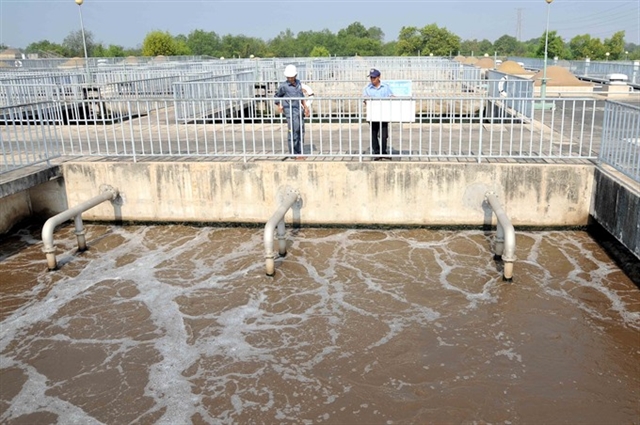 Society
Society

HCM City authorities plan to gradually relocate its water supply sources further upstream of the Sài Gòn and Đồng Nai rivers as part of its effort to ensure clean water for local use.

|
| A wastewater treatment system at Bình Hưng Wastewater Treatment Plant in HCM City. HCM City plans to gradually relocate its water supply sources further upstream of the Sài Gòn and Đồng Nai rivers as part of its effort to ensure clean water for local use. — VNA/VNS Photo An Hiếu |
HCM CITY — HCM City authorities plan to gradually relocate its water supply sources further upstream of the Sài Gòn and Đồng Nai rivers as part of its effort to ensure clean water for local use.
Experts have warned that the current main source of water has become seriously polluted due to the impact of socio-economic development along the Sài Gòn – Đồng Nai river system.
The city currently draws some 94 per cent of the water for treatment at a spot downstream of where the Sài Gòn River meets the Đồng Nai River, at the Hòa Phú pumping station in its Củ Chi District, and at Hóa An in Đồng Nai Province.
Under the city’s 2020-30 water supply plan, the city will relocate the Hòa Phú pumping station to a new location, about 20 km from the existing pumping station and 15 km upstream from the junction of Thị Tính and Sài Gòn rivers.
According to the Department of Natural Resources and Environment, water in downstream Sài Gòn River is suffering from severe microbiological pollution and slight oil contamination.
Pollution indicators like ammonia, microorganisms and manganese have all increased, exceeding the permitted standards of Việt Nam and the World Health Organization.
Dr. Hồ Long Phi, director of the Centre for Water Management and Climate Change under the National University of HCM City, said that pollution in the Saigon River remains ‘serious’.
He said it was vital to develop hi-tech water treatment plants if the city continues to draw this water for local use.
“The water upstream in the Sài Gòn and Đồng Nai rivers is in the safe zone, which is less impacted by climate change and sea level rise in the next 50-100 years,” he said.
He said the city would need a huge investment in building new pumping stations with extremely large capacity of millions of cubic metres a day, as well as investment in long and large-scale pipelines. This would also require site clearance compensation costs.
Dr Trần Đức Hà, director of the city Research Institute of Water Supply, Sewerage and Environment, said: “The core solution is to ensure water security management.”
Dr. Phùng Đức Tùng, director of the Mekong Economic Research and Development Institute, said that water for daily life has become increasingly rare. “Authorities should work on a plan to build reservoirs to store water for treating.”
Two projects, one on water supply in the 2020-2050 period, and the other on clean water supply and ending the exploitation of underground water in the 2020-2030 period, have recently been approved by the city People’s Committee.
By 2025 the city plans to ensure that every resident has access to tap water and increases the average supply to 165 litres. The municipal water supply capacity would reach 3.6 million cu.m per day, using only 100,000 cu.m of groundwater by 2025. — VNS